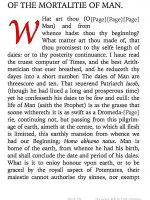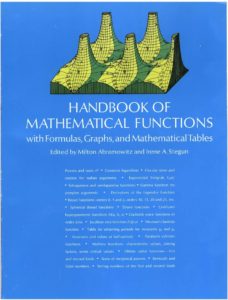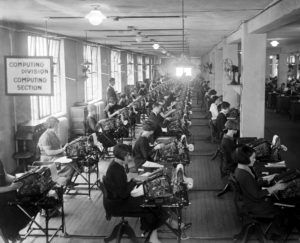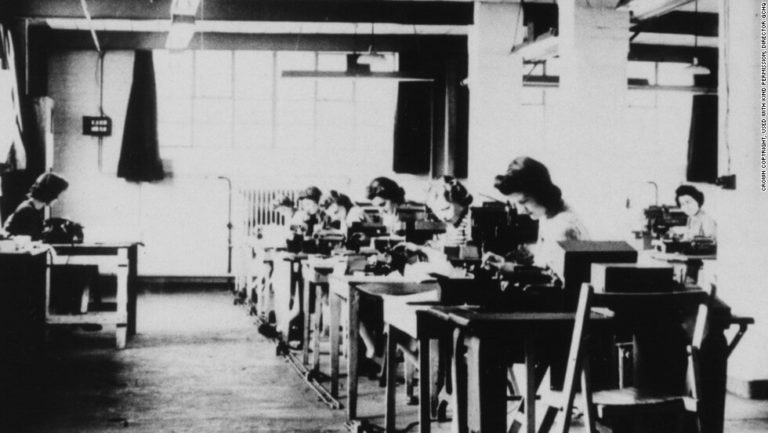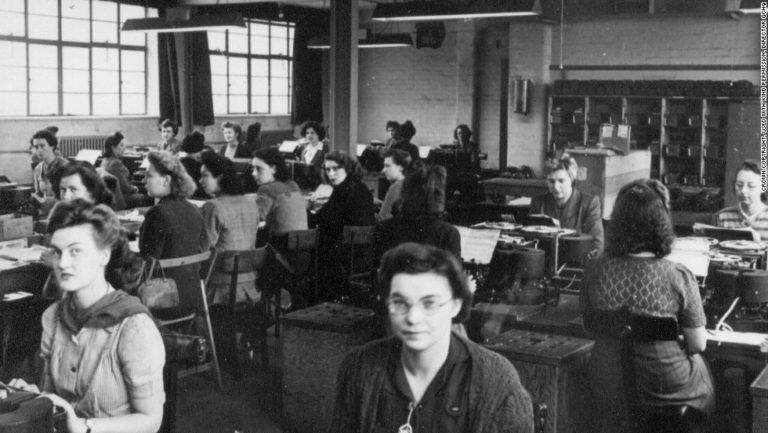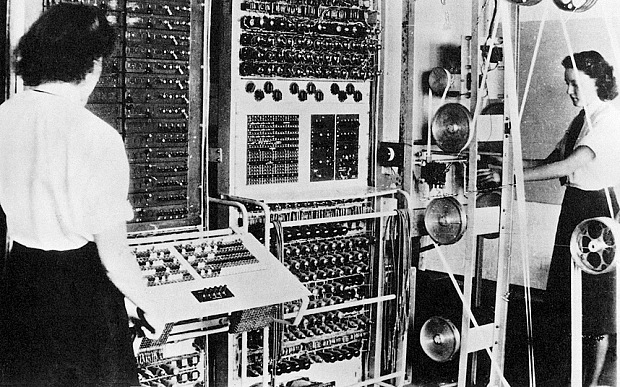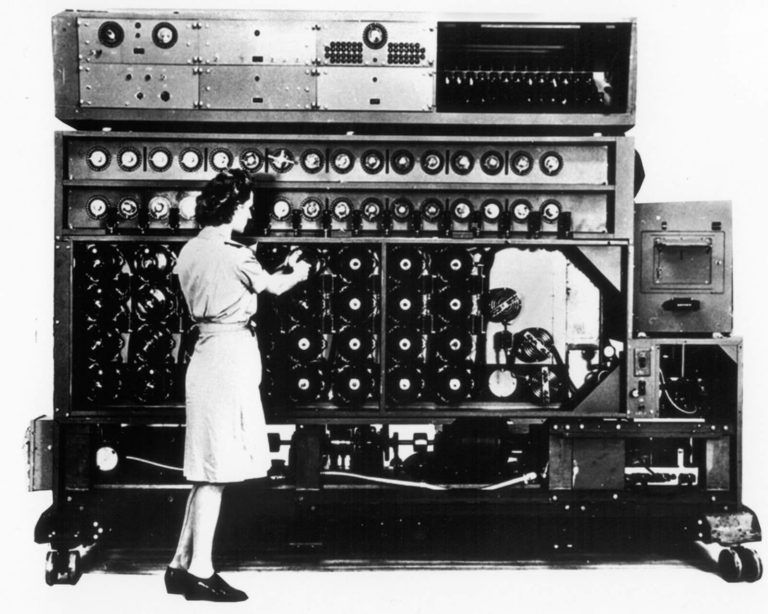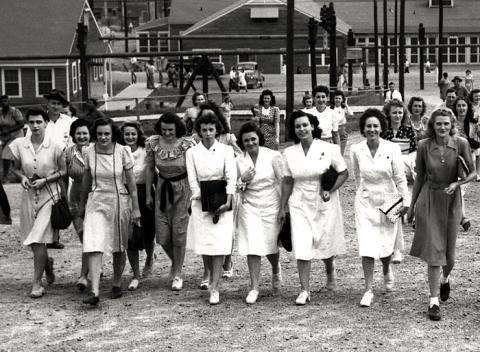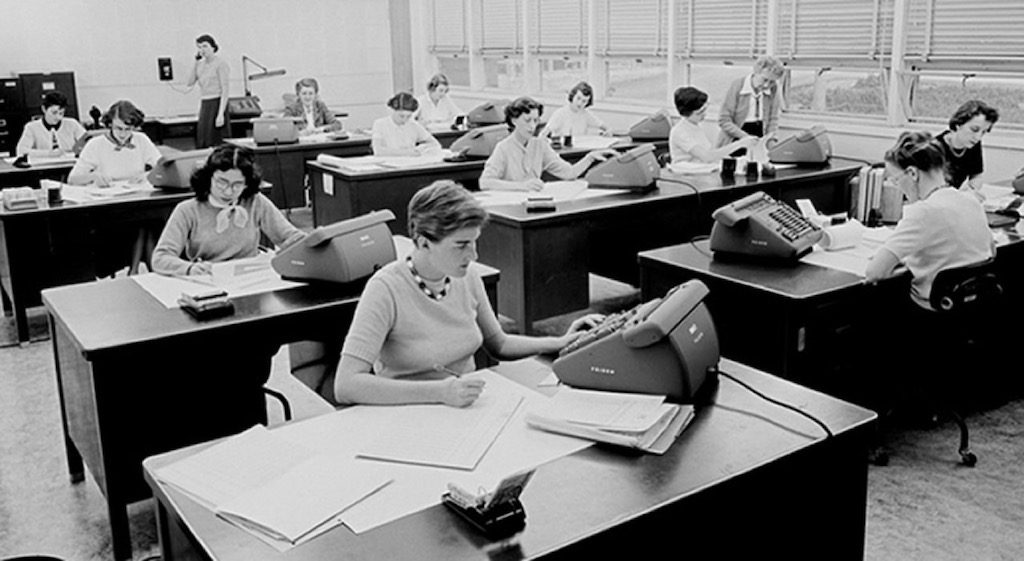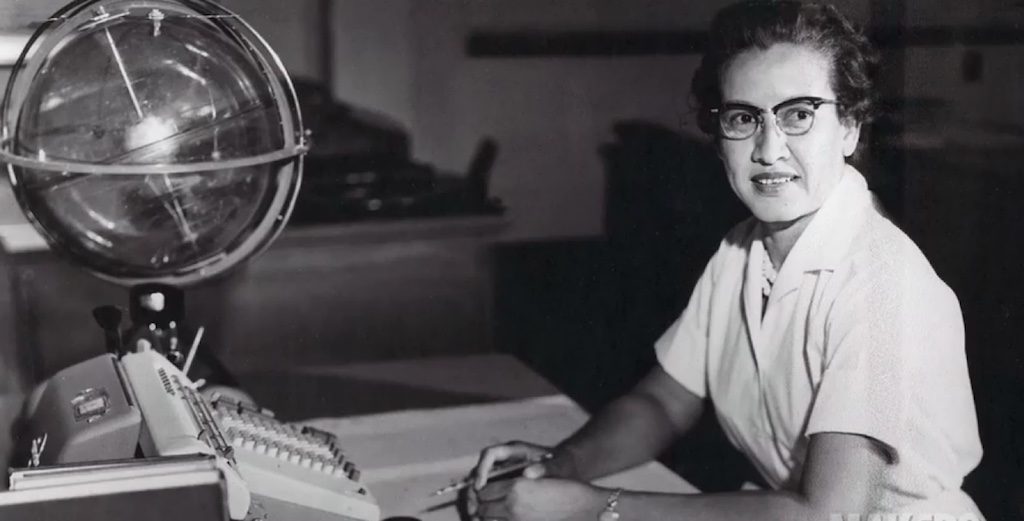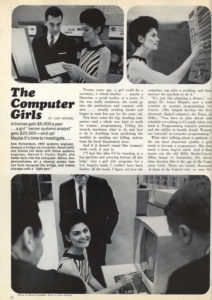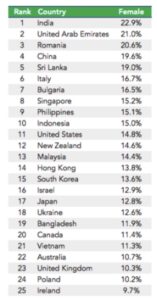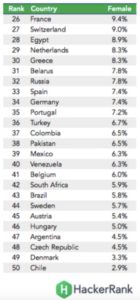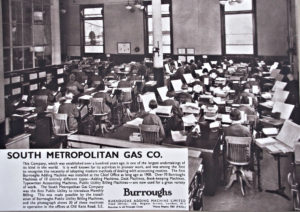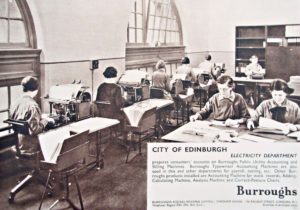When Computers Were Human and Mostly Women.
The term “computer” appeared long before the electronic computers of our times. It was used in ancient Rome with reference to people performing calculations (calculatore), and it would seem it was used again later in 1613 in the book of Richard Brathwait (1588-1673) “The Yong Mans Gleanings,” where you can read: ” I have read the truest computer of Times, and the best Arithmetician that ever breathed, and he reduceth thy dayes into a short number.” In 1623 Shakespeare used the word “compters” in the Winter’s Tales: there is a missing “u” of course… It may not be entirely clear to what the afore mentioned quoted passage really refers to (ref 1), but the term computer in later years designated a person who performed calculations.
Teams of people started to be employed to perform complex calculations (ref.2). One of the first concerted computational effort may have been in astronomy and involved the calculations of the return of Hailey’s comet that was undertaken in 1757 by the Frenchman Joseph Lalande, who involved the mathematician Alexis Clairaut and Nicole-Reine Lepaute. Lepaute was previously invloved in calculation of characteristics of pendulum motion. The calculations of the trio, which were done by hand, and involved the solution of Newton’s equations of motion for the comet passing in the gravitational fields of Jupiter and Saturn, took six months!
Nevil Maskelyne, the British Astronomer Royal, started producing the Nautical Almanac, which contained astronomical tables prepared by a network of human computers during the period 1765–1809 (ref.3). The people doing the calculations came from various walks of life and were not necessarily scientifically trained.
When the U.S. decided to create its own nautical almanac around 1840, the calculations were perfrmed by a group of human computers under the guidance of Harvard professor Benjamin Pierce. Amongst the computers was Maria Mitchell, who by then had won a medal from the king of Denmark for her discovery of a new comet in 1847. Mitchell eventually became the first female astronomy professor at Vassar College
The first sets of tables of mathematical functions (logarithms, trigonometric functions, etc…) were computed by teams of people. Some were never published like the logarithmic tables of the French Cadastre (ref.4) calculated by tens of human computers in the years 1793-1796 under the leadership of Gaspard de Prony (1755-1839). Some decades after Prony highly accurate, tables of logarithms were calculated by hand in the late 19th century by the family team of the Scottish mathematician and engineer Edward Sang and his two daughters Jane and Flora Sang. They produced 47 handwritten volumes containing logarithms of numbers up to 370000, some calculated up to 28 places! These also remained unpublished…
One of the more recent large projects was the Mathematical Tables Project (a project of the Works Progress Administration, a New Deal agency established by President Roosevelt) the purpose of which was to compute tables of higher mathematical functions (ref.2 & ref.5). The project operated from 1938 to 1948. The mathematical leader was Dr.Gertrude Blanch (1897–1996). At some point it employed up to 450 human computers. One of the main legacies of the project is the well known Handbook of Mathematical Functions (ref.6) , published in 1964, and edited by Milton Abramowitz (1915–1958) and Irene A. Stegun (1919–2008), two veterans of the Project.
Human computers performed calculations for a variety of projects and most often the groups were mainly composed of women (at times less well paid than men). From World War I human computers were busy calculating trajectories of anti-aircraft artillery. As mechanical calculators became more common these were used to help in calculations as you may see in the photographs on this page. In most cases the computers worked under the guidance of a supervisor (scientist) who had defined the problem that needed to be solved and frequently more than one team worked on the same problem to avoid errors. You can see supervisors overseeing the calculating operations in the computing divisions in the two pictures below. In India, Prasanta Chandra Mahalanobis, was among the earliest Indians to have employed ‘human computers’ in his statistical studies in the early 20thcentury.
World War II.
During World War II, many women in England were involved in the efforts to break German military codes at Bletchley park. They were involved in programming the earliest computers, the “Bombe” & the “Colossus” (image below) to decrypt codes like the “Enygma” code (You can read an interesting account of life of the codebreakers in the book “The Secret Lives of Codebreakers”, ref.8).
Women in the US were calculating ordnance and trajectory tables using electromechanical calculators. They were also employed Los Alamos, to perform calculations for the Manhattan Project on the nuclear bomb (ref.7). A few were physicists or engineers and a number were wives of scientists. Amongst these were some of the human computers were Mary Frankel, Josephine Elliot, Beatrice “Bea” Langer, Augusta “Mici” Teller, Jean Bacher, and Kay Manley.
Programming the Zuse Z4.
In 1948 Konrad Zuse hired Mrs. Ursula Walk, (born Hebekeuser) in the Zuse engineering office Hopferau as a programmer for the machine Z4. She created the first “calculation plans” or programs in the Z4 codes.
Ursula Walk was the first post World War II German computer programmer. The image shows a 1948 photograph of Mrs Walk programming the Z4 (Image courtesy Dr. Horst Zuse).

Programming the ENIAC.
One of the few technical job categories available to women in the USA was computing and the early ENIAC computer programmers were drawn from a group of about two hundred female ”computers”who studied at the Moore School of Electrical Engineering at the University of Pennsylvania. Kay McNulty, Betty Jennings, Betty Snyder, MarlynMeltzer, Fran Bilas, and Ruth Lichterman were the first programmers of the ENIAC, though their work was not widely recognized for over 50 years. Betty Holbertonlater invented the first sorting algorithm and helped design the first commercial electronic computers, the UNIVAC and the BINAC, alongside Jean Jennings.
Women Computers at NACA/NASA.
NASA (or NACA as it was initially called) hired many women to perform accurate calculations necessary to launch rockets to the moon. A recent, 2016, film “Hidden Figures” is dedicated three African-American women mathematicians (Katherine Johnson, Dorothy Vaughan and Mary Jackson) who served a vital role in NASA during the early years of the U.S. space program. Amongst these, e.g. Katherine Coleman Goble Johnson (b.1918) shown in the picture below, was known for accuracy in computerised celestial navigation. She calculated the trajectories, launch windows, and emergency back-up return paths for many flights from Project Mercury, and the 1969 Apollo 11 flight to the Moon, through the Space Shuttle program. Some interesting insights into how Langley, where they worked, operated and the prevalent segregation may be found in this Macalester website.

From When “Computer Girls” Were à la mode to Today.
Women were employed in many offices to perform accounting using mechanical calculators as you can see here in some advertisements. There was a time in the post WWII period when women occupied many if not most positions as reasonably well paid programmers. Programming was regarded as a “woman’s job”. There was even an article in 1967, Cosmopolitan magazine regarding this. You can read it here (click image to enlarge).
The situation has changed today and few women are involved in coding. StackOverflow.com suggests only about 6% of developers around the world are women. HackerRank.com computer programming test takers distribution by country is shown below. In some countires the situation looks rosier and in some its bleak.
References.
Alan Galey, The Shakespearean Archive: Experiments in New Media from the Renaissance to Postmodernity. Cambridge University Press, 2014, ISBN: 9781139629201. https://doi.org/10.1017/CBO978113962920.
David Alan Grier, When Computers Were Human, David Alan Grier, 2005, Princeton University Press, ISBN- 9780691133829
M. Croarken, “Tabulating the Heavens: Computing the Nautical Almanac in 18th-Century England,” in IEEE Annals of the History of Computing, vol. 25, no. , pp. 48-61, 2003. doi:10.1109/MAHC.2003.1226655
Denis Roegel. The great logarithmic and trigonometric tables of the French Cadastre: a preliminary investigation. [Research Report] 2010.
Denis Roegel. A reconstruction of the Mathematical Tables Project’s table of natural logarithms (4 volumes, 1941). [Research Report] LORIA, UMR 7503, Université de Lorraine, CNRS, Vandoeuvre- lès-Nancy. 2017.
M. Abramowitz and IA Stegun, Handbook of Mathematical Functions, 1964, United States Department of Commerce, National Bureau of Standards. ISBN: 0-486-61272-4
Ruth H. Howes and Caroline L. Herzenberg, Their Day in the Sun: Women of the Manhattan Project, Temple University Press, 1999, (ISBN13: 9781566397193).
Sinclair McKay, The Secret Lives of Codebreakers: The Men and Women Who Cracked the Enigma Code at Bletchley. Penguin Random House, ISBN: 9780452298712
Links
https://www.atomicheritage.org/history/women-and-bomb
https://crgis.ndc.nasa.gov/historic/Human_Computers
http://omeka.macalester.edu/humancomputerproject/map

